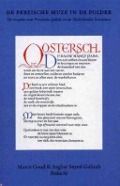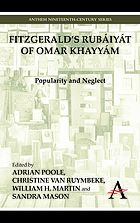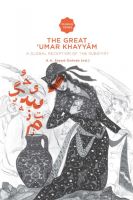FitzGerald’s Rubáiyát of Omar Khayyám: Popularity and Neglect, edited by Adrian Poole, Christine van Ruymbeke, William H. Martin, and Sandra Mason (Review). A. Barton.
Victorian Studies, 56 (2014), Nr 2 (Winter), pp. 327-329.
Archives
De Perzische muze in de polder. De receptie van de Perzische poëzie in de Nederlandse literatuur
De Perzische muze in de polder. De receptie van de Perzische poëzie in de Nederlandse literatuur. Redactie Marco Goud & Asghar Seyed-Gohrab. Amsterdam, Rozenberg, 2006. 199 p. ISBN: 9051706960.
Summary:
Lectures presented at a conference on the influence of Persian poetry on Dutch literature, Leiden, 27 May, 2005.
FitzGerald’s Rubáiyát of Omar Khayyám. Popularity and Neglect
FitzGerald’s Rubáiyát of Omar Khayyám. Popularity and Neglect. Edited by Adrian Poole, Christine van Ruymbeke, William H. Martin and Sandra Mason. Anthem Press, 2011.
240 p. ISBN 9780857287816.
The Great ‘Umar Khayyám. A Global Reception of the Rubáiyát
The Great ‘Umar Khayyám. A Global Reception of the Rubáiyát. A.A. Seyed-Gohrab. Leiden, Leiden University Press, 2012. 267 p. (Iranian Studies Series). ISBN: 9789087281571.


